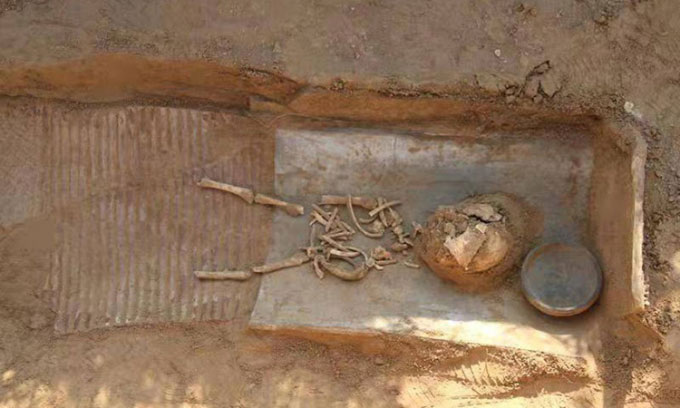Experts Discover 128 Burial Vases from the Han Dynasty, When Child Mortality Rates Were High and Grave Construction Was Costly.
A team of Chinese archaeologists announced on November 22 that they had discovered 128 child skeletons placed in vases according to an ancient burial ritual. They also found many coins, pottery, and tiles while excavating the vases in the Inner Mongolia Autonomous Region.

Child skeletons buried in vases found in Inner Mongolia. (Photo: Institute of Cultural Relics and Archaeology of Inner Mongolia Autonomous Region).
The experts believe that these children lived during the Han Dynasty (from 202 BC to 220 AD). During this period, children were not cremated. The ancients would use several vases, two or sometimes more, to create a “house” to protect the remains.
There were also instances of adults being buried in vases, but this practice was much more common for children, according to Lam Wen-cheong, an expert at the Chinese University of Hong Kong. “We are not sure why, but it seems that in this area, people commonly used vases to bury children”, he stated.
Burial of child skeletons in vases may sound strange by today’s standards, but in reality, it is not much different from using coffins. “In ancient China, cremation appeared quite late, often after the Han Dynasty. In some places, we have found cremation-style graves dating back to the Bronze Age, but in the central plains, this practice emerged later”, Lam explained regarding the burial of child skeletons not being cremated before being placed in vases.
The use of vases for burial may have become popular because constructing Han-style graves was a financial burden during a time when child mortality rates were high. Han Dynasty graves were elaborately built and grand, often consisting of brick chambers filled with items that the deceased might need in the afterlife. For the wealthy, funerals became a display of status. Some ancient artworks depict scenes of crowds and chariots participating in processions to honor the deceased.
However, for common people, organizing such funerals was nearly impossible, and even small graves required a significant amount of bricks. Burial in vases became an alternative solution as people still wanted to protect the remains from natural elements and safeguard the souls from malevolent spirits.
Burial in vases is not a practice unique to ancient China. In 2012, scientists in Tamil Nadu, southern India, discovered several burial vases dating from 1800 to 1500 BC, much earlier than those found in Inner Mongolia. In July of this year, in Budapest, Hungary, experts also found vases dating from 2200 to 1450 BC, but containing cremated remains.
- Discovery of a thousand-year-old mummy leaves archaeologists astonished with its bizarre posture, the more they look, the more frightening it becomes
- The chilling mystery of an Iron Age skeleton buried in a strange position in an ancient castle
- Excavating a thousand-year-old ancient grave, the discovery of 68 unusual braids astonishes everyone

















































